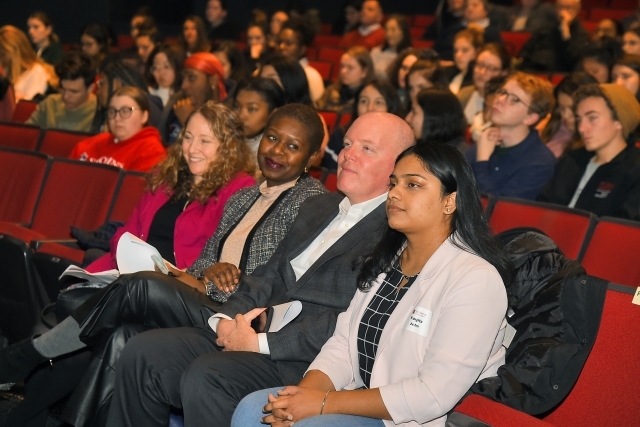
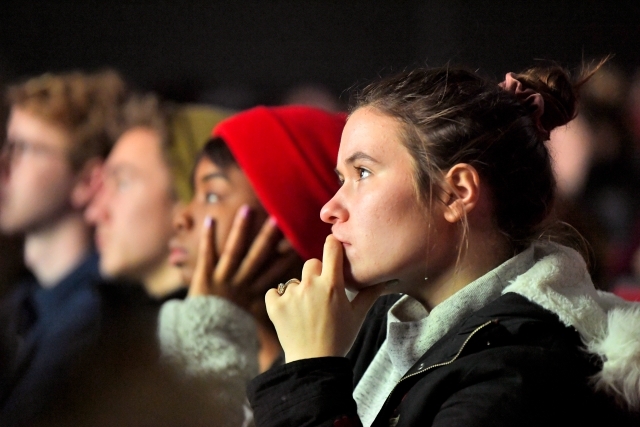
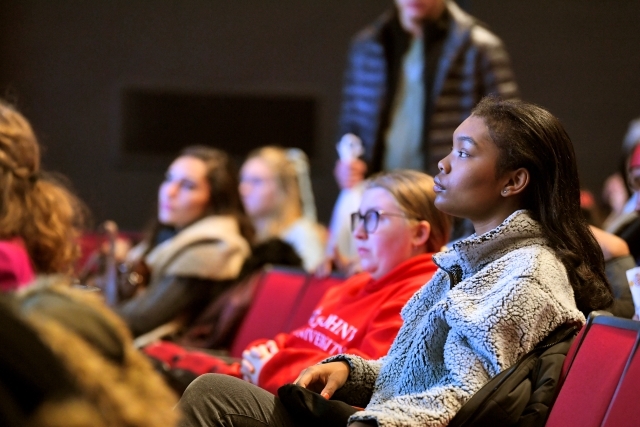
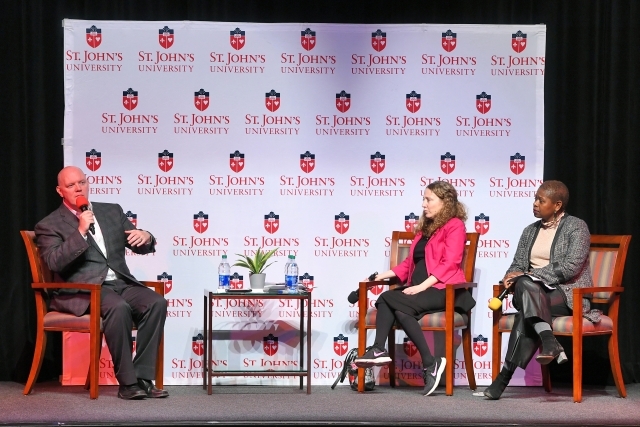
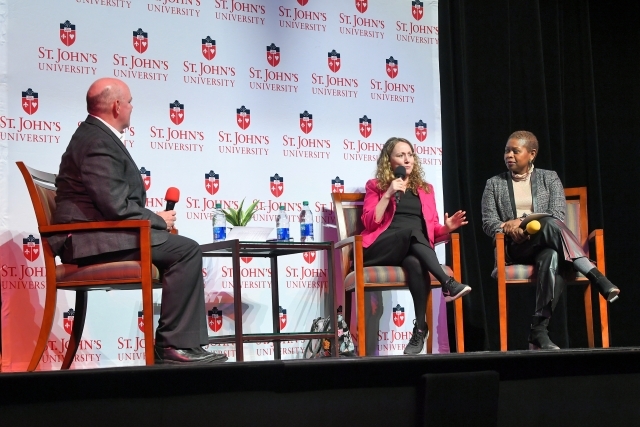
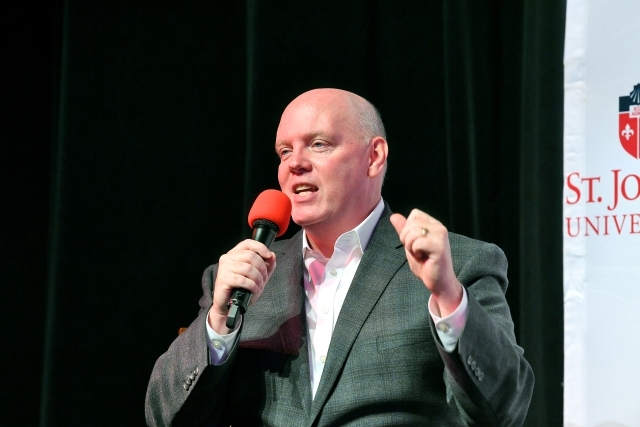
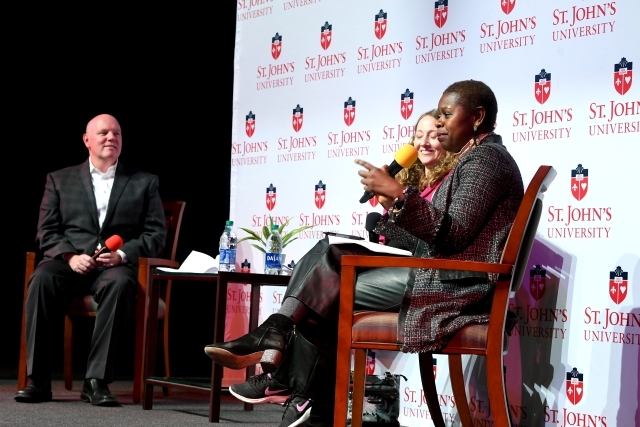
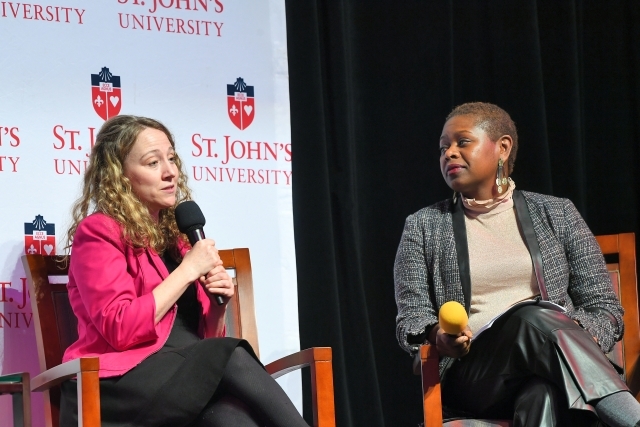
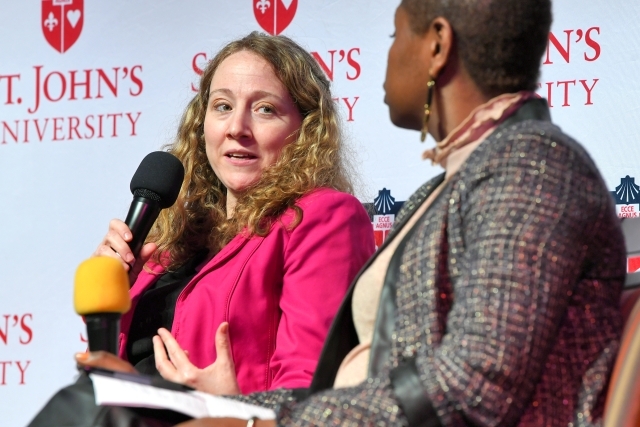
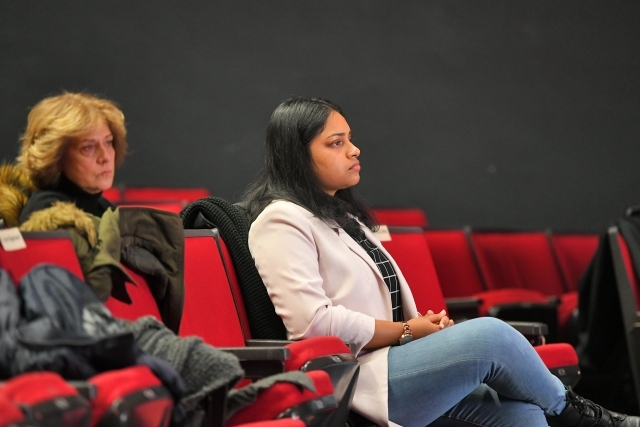
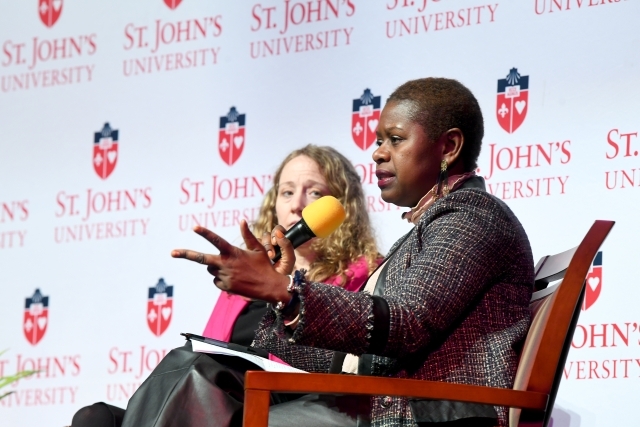
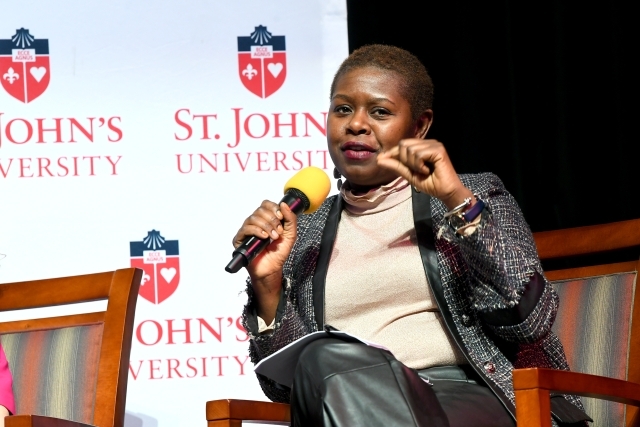
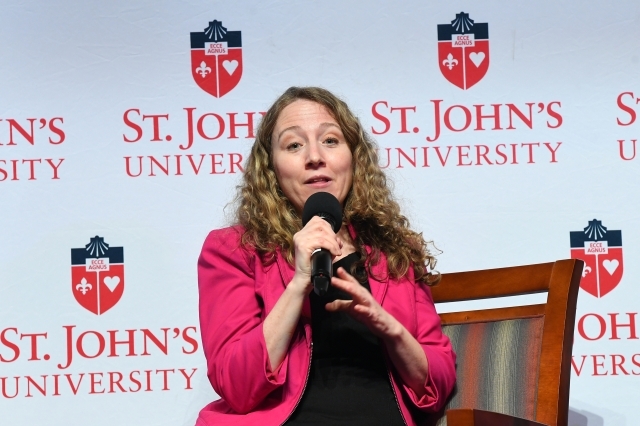
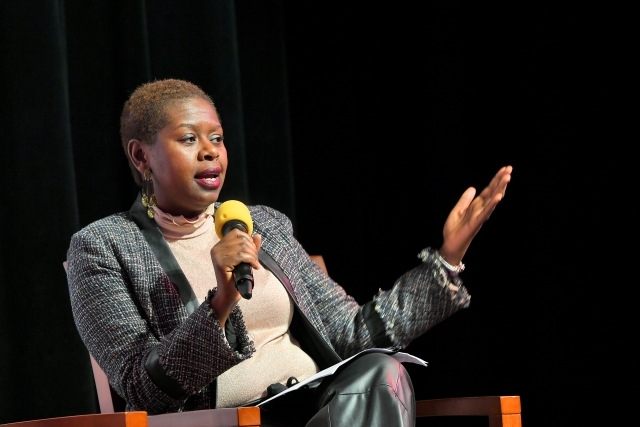
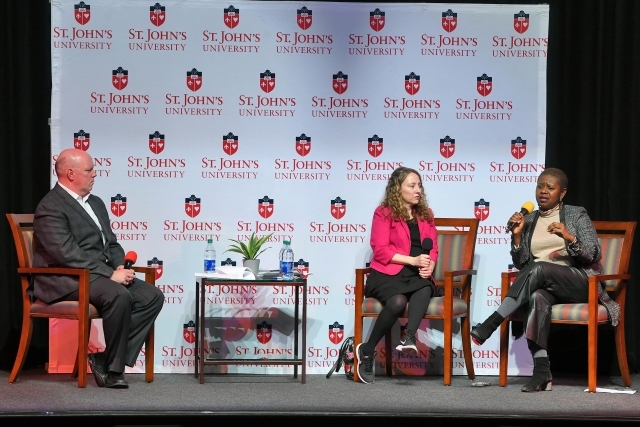
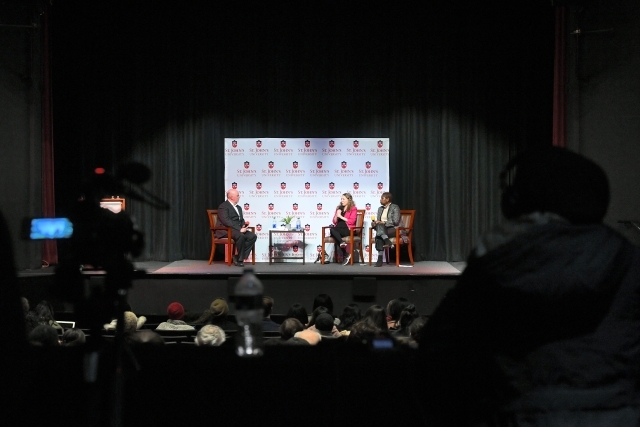
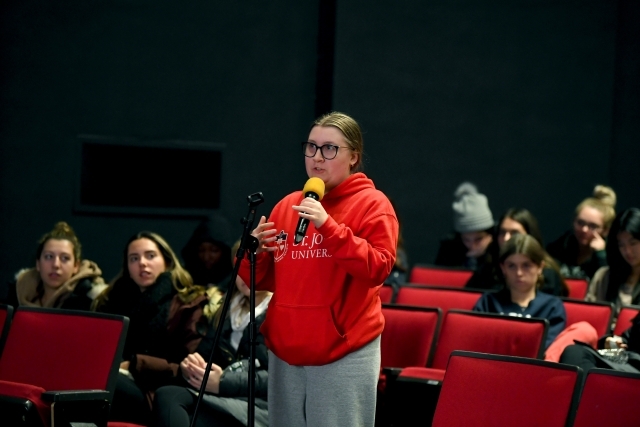

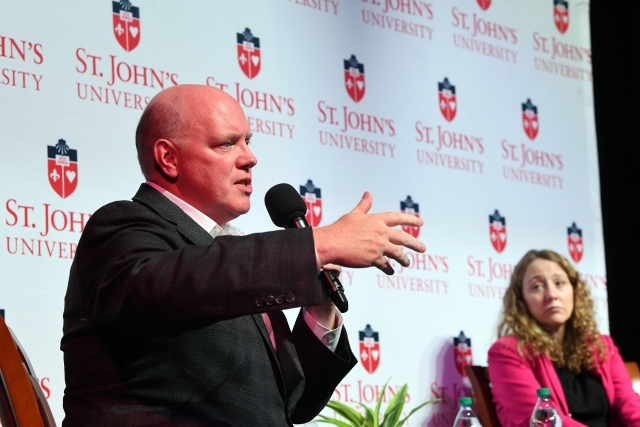
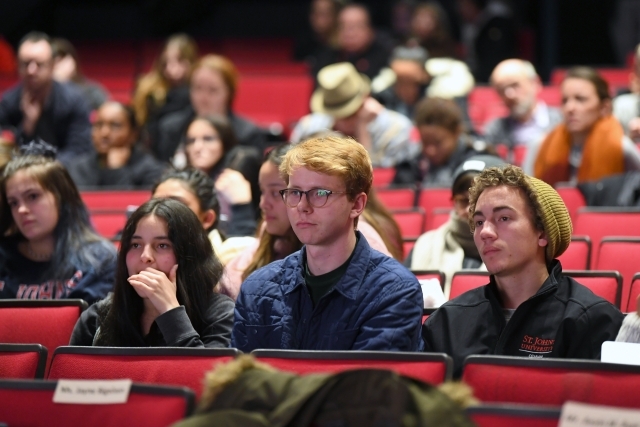
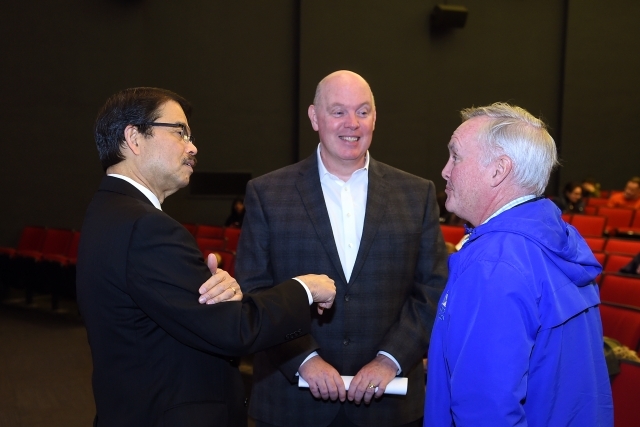
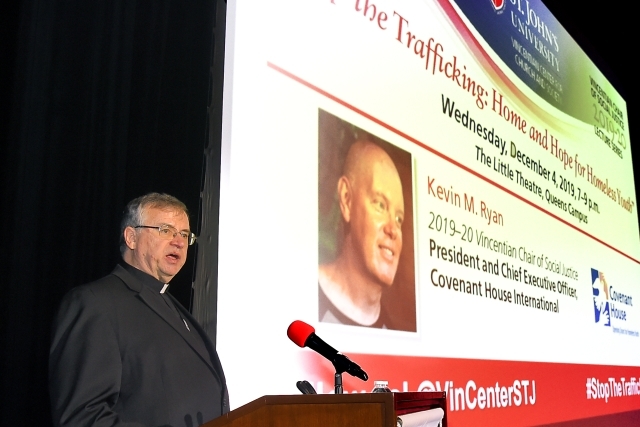
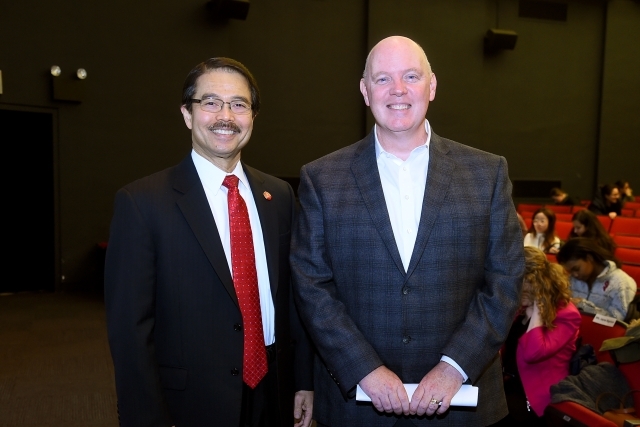
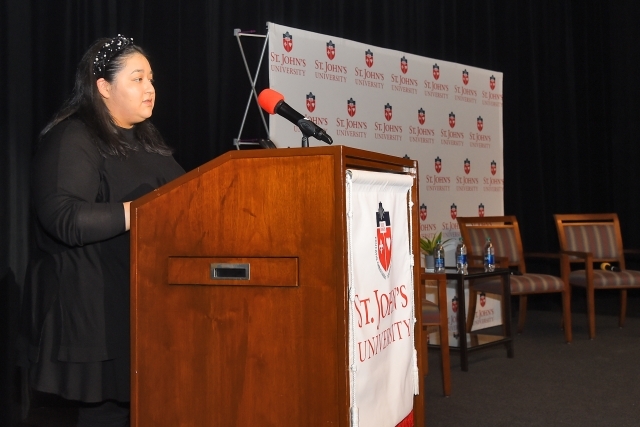
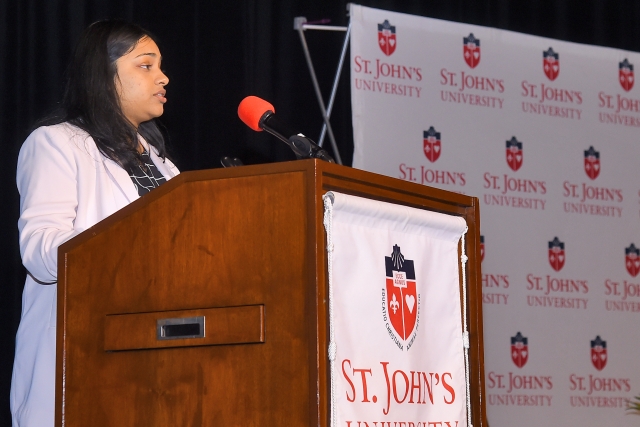

























Human trafficking is a pervasive, insidious problem occurring in all 50 states and in nearly every country around the world. A billion-dollar industry, it victimizes the most vulnerable members of society. For many years, it has been a hidden crime, but organizations like Covenant House International are dragging it into the light—attempting to raise awareness, assist victims, and bring perpetrators to justice.
On Wednesday, December 4, Kevin Ryan, President and Chief Executive Officer of Covenant House International, and holder of the 2019-20 Vincentian Chair of Social Justice, delivered the second of four lectures with the theme of “From Homelessness to Hope.” Held in the Little Theatre, Mr. Ryan was joined by Covenant House colleagues Jayne Bigelsen, Vice President of Advocacy, and Fabiola Desmont-Mondesir, Director of Anti-Human Trafficking Initiatives, for a wide-ranging discussion on the topic.
Covenant House, founded in 1972, provides housing and support services to youth facing homelessness and operates in 31 cities throughout the United States, working with an average of 80,000 young people each year. Mr. Ryan told those gathered that sharing information on trafficking was critical, as many victims were around their age. He noted that Covenant House offers a complete approach to combating this scourge including direct care, advocacy, and research.
Every year, traffickers generate more than $150 billion in profits by victimizing millions of people worldwide. “Vulnerable children and youth experiencing homelessness are a prime target of this industry,” Mr. Ryan stressed.
Mr. Ryan noted that across the United States, Canada, Mexico, and Central America, where Covenant House provides residential programs and vital services to homeless young people, the most common form of human trafficking is commercial sexual exploitation. Its primary victims: young women and girls. Ms. Desmont-Mondesir noted that Covenant House has identified a direct correlation between youth homelessness and becoming a victim of human trafficking.
Human traffickers exploit the lack of available beds in youth homeless shelters, Ms. Bigelsen said. “They manipulate the young and homeless by telling them that shelters are full and promising them a soft bed elsewhere.”
Traffickers make kids feel special, offering them temporary safety and a feeling there is hope, but it isn’t long before traffickers show their true intentions, Mr. Ryan explained.
Ms. Desmont-Mondesir observed that pimps may use psychological and emotional coercion that is just as effective as physical restraint. “Despite enduring horrific violence, many victims believe their pimps love them.”
She added that traffickers often exert control over their young victims by giving them drugs to create dependency, confiscating their identification and money, withholding food or sleep, and isolating victims from their families and friends, among other tactics. “Pimps are really smart,” Ms. Bigelsen remarked. “It’s almost like they use the skills of social workers. They detect the vulnerabilities people have.” She noted that a pimp once brazenly placed an advertisement on Craigslist.org—specifically targeting kids living at Covenant House, enticing them with money and a less restricted lifestyle.
“Direct care,” Mr. Ryan emphasized, “allows us to make the greatest and most immediate impact in the lives of young trafficking survivors.” Covenant House has developed a wide range of services ministering to these vulnerable individuals. They have successfully fought for safe harbor laws and to close the legal loophole that had allowed online marketplaces to advertise young people for sex. All of their facilities provide refuge to human trafficking survivors.
“Covenant House boils down to relationships,” Mr. Ryan said. “Kids are so hungry for connection and community. They’re often more starved for that than for anything else.”
“The homeless whom Covenant House assists match easily with our students in terms of age, ethnicity, religion, and orientation,” noted Rev. Patrick Griffin, C.M., Executive Director for the Vincentian Center for Church and Society. “Listening to Mr. Ryan and his colleagues tell stories about their residents reveals the fragility of the situations of some young adults. It was so important for our community to hear these stories and to ask how we can contribute to the support and care of these marginalized sisters and brothers.”
Before the lecture, a group of invited students gathered in Marillac Terrace for a more in-depth examination of these topics with Mr. Ryan and his colleagues. “You never know what’s going on with a child at home,” observed Psychology major Destiny Eden, who also serves as a substitute teacher in the Pemberton Township School District. “The topic resonates with me because this is something I have seen before.”
“It is so important to learn about the resources Covenant House has available for survivors of trafficking,” observed Alexandra Vernice, a graduate student in St. John’s School Psychology Psy.D. Program. “It’s also critical to learn the signs people who are being trafficked exhibit. These people are all around us, and often they can’t ask for help. It’s also not talked about very much except for lectures and in academic spaces. Out in the ‘real world’ I think people believe it only happens in places like Thailand, but it’s happening everywhere.”
